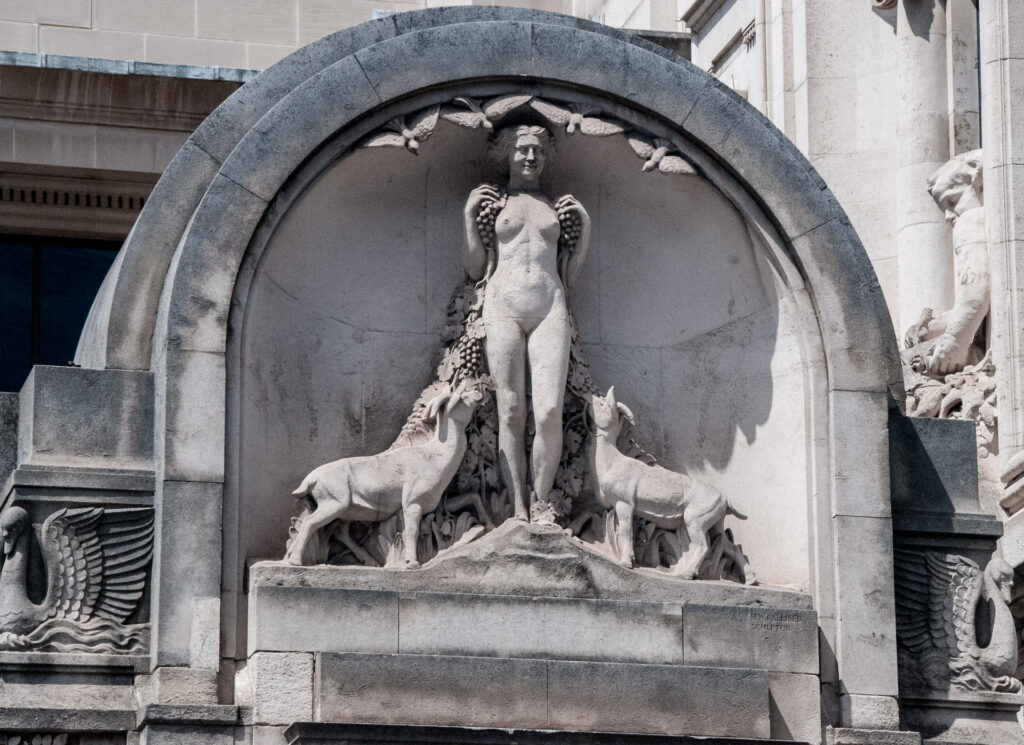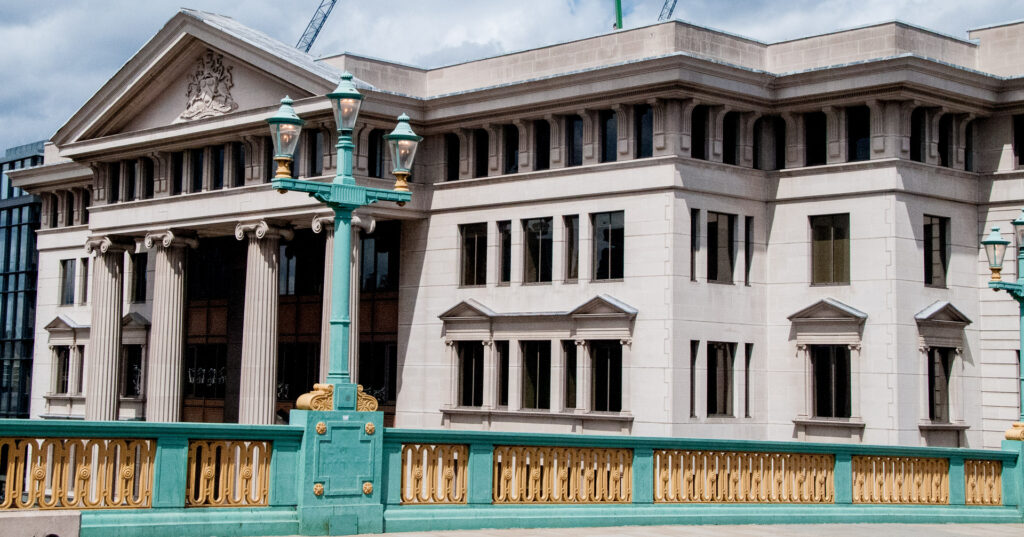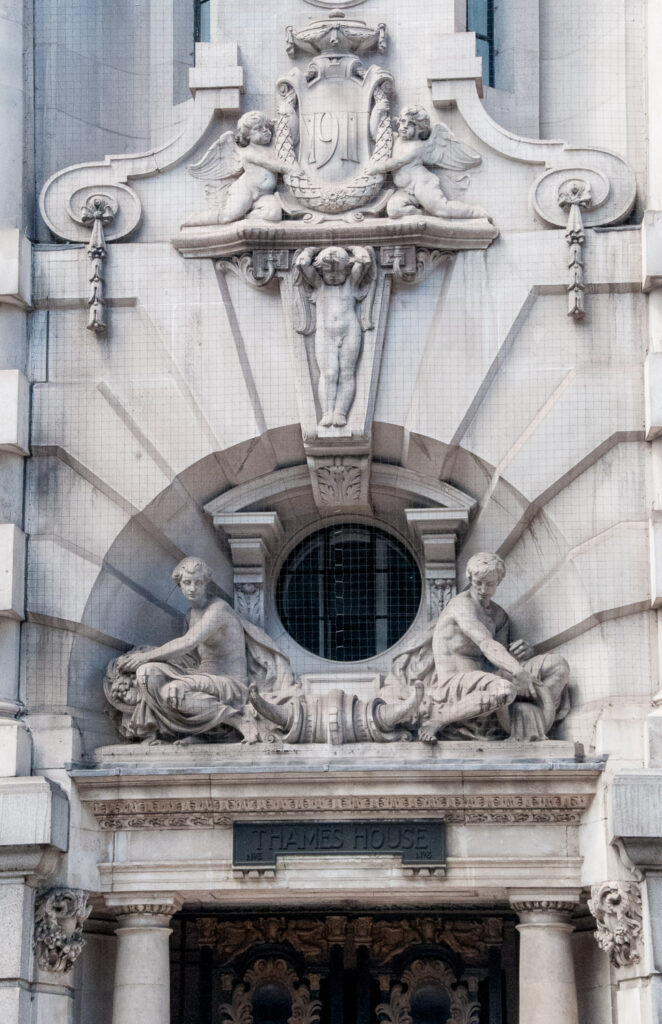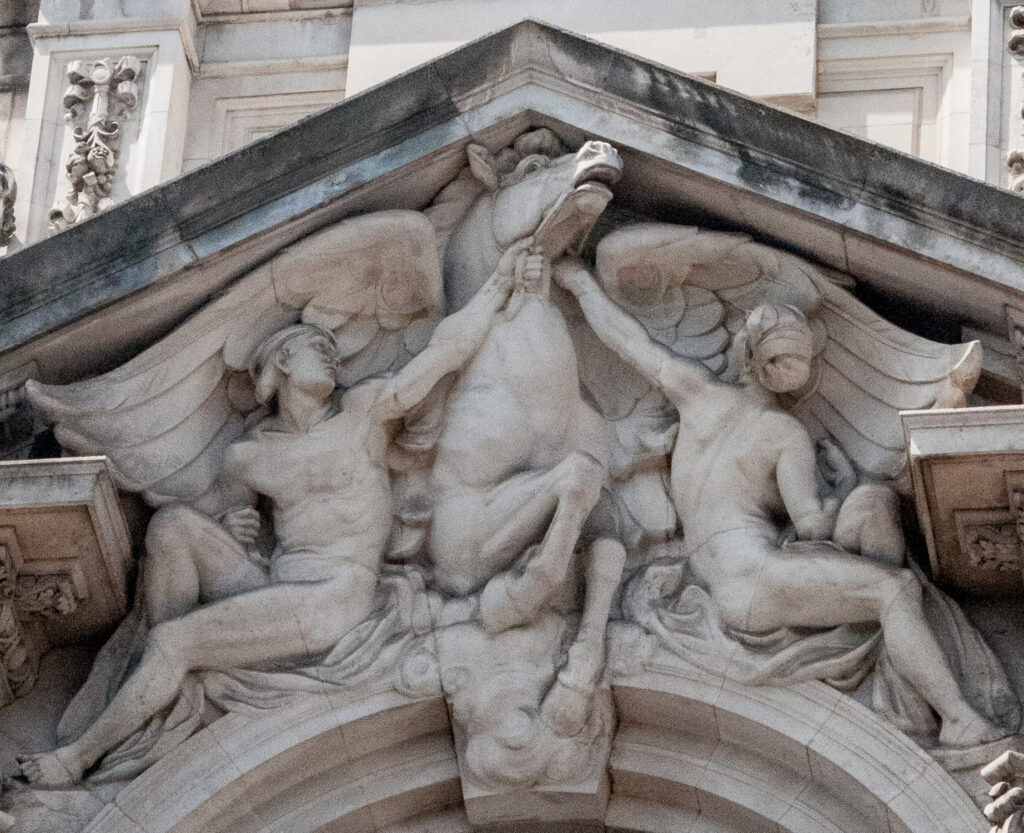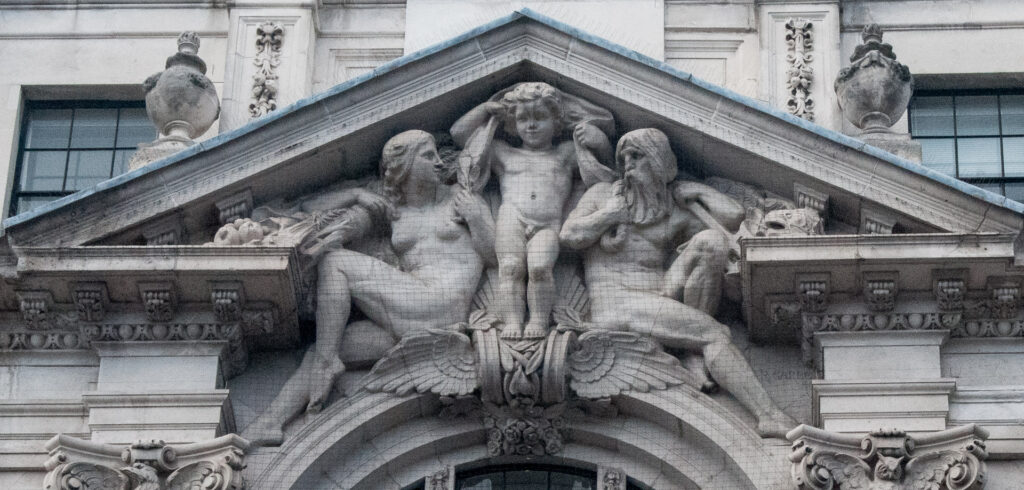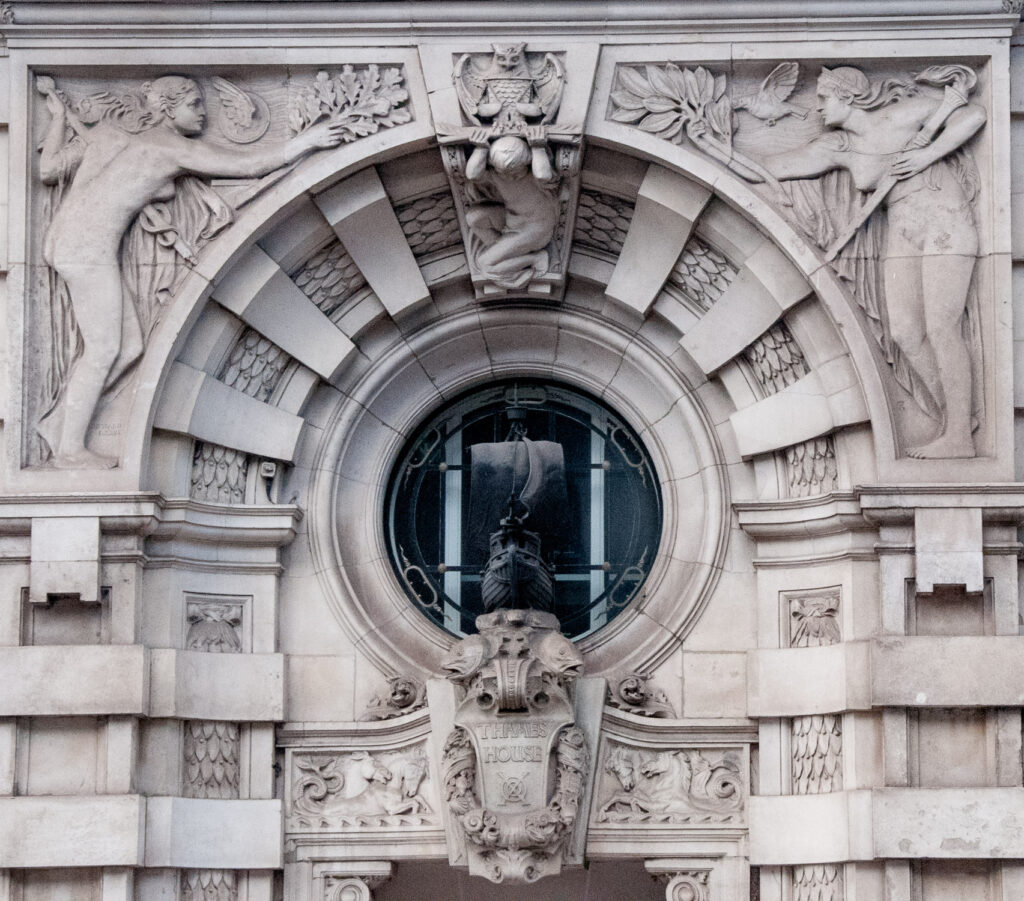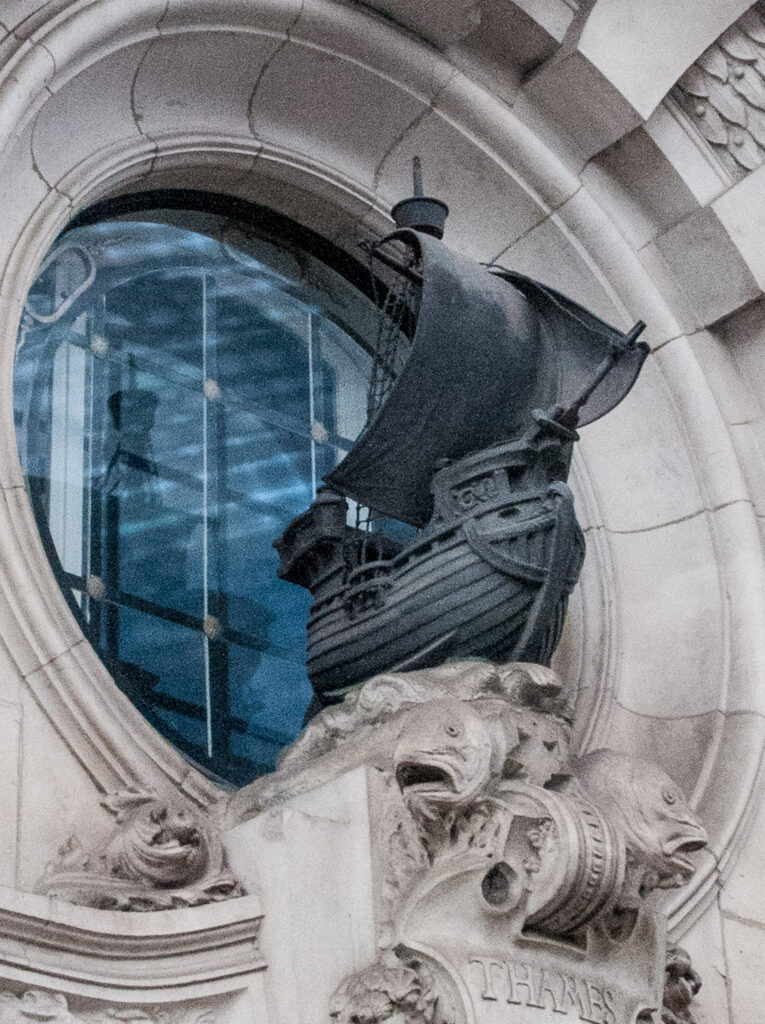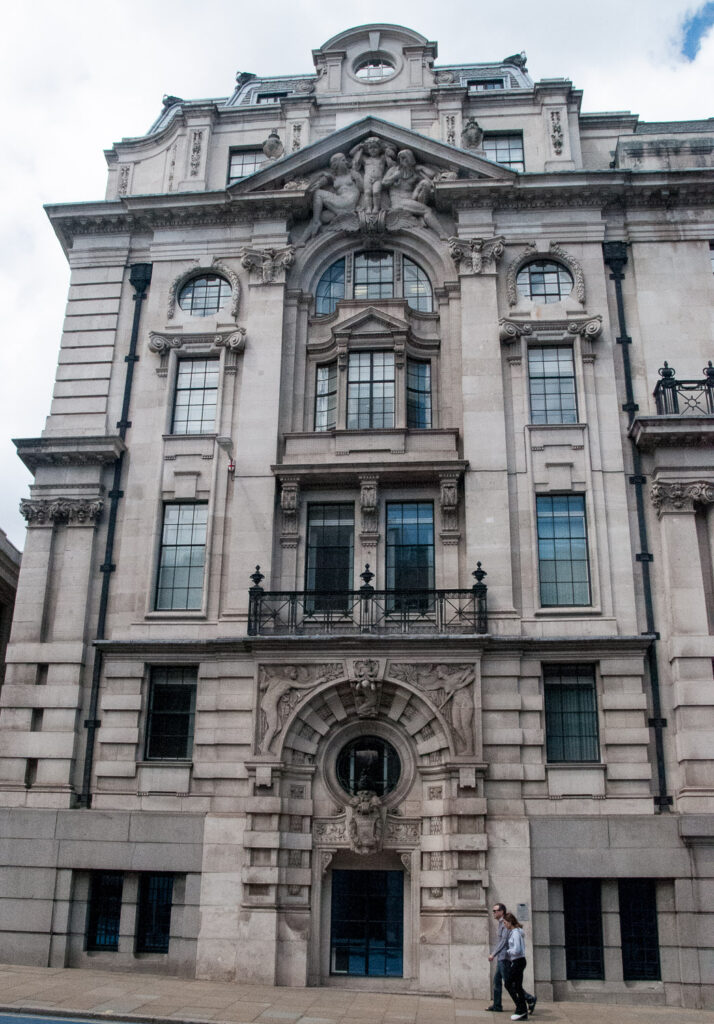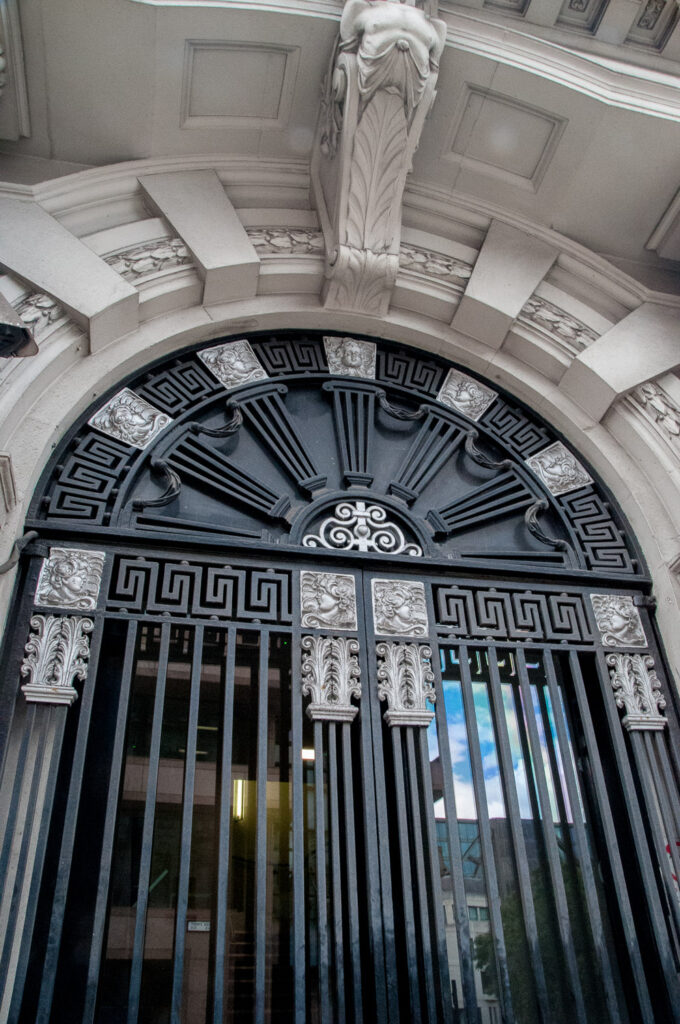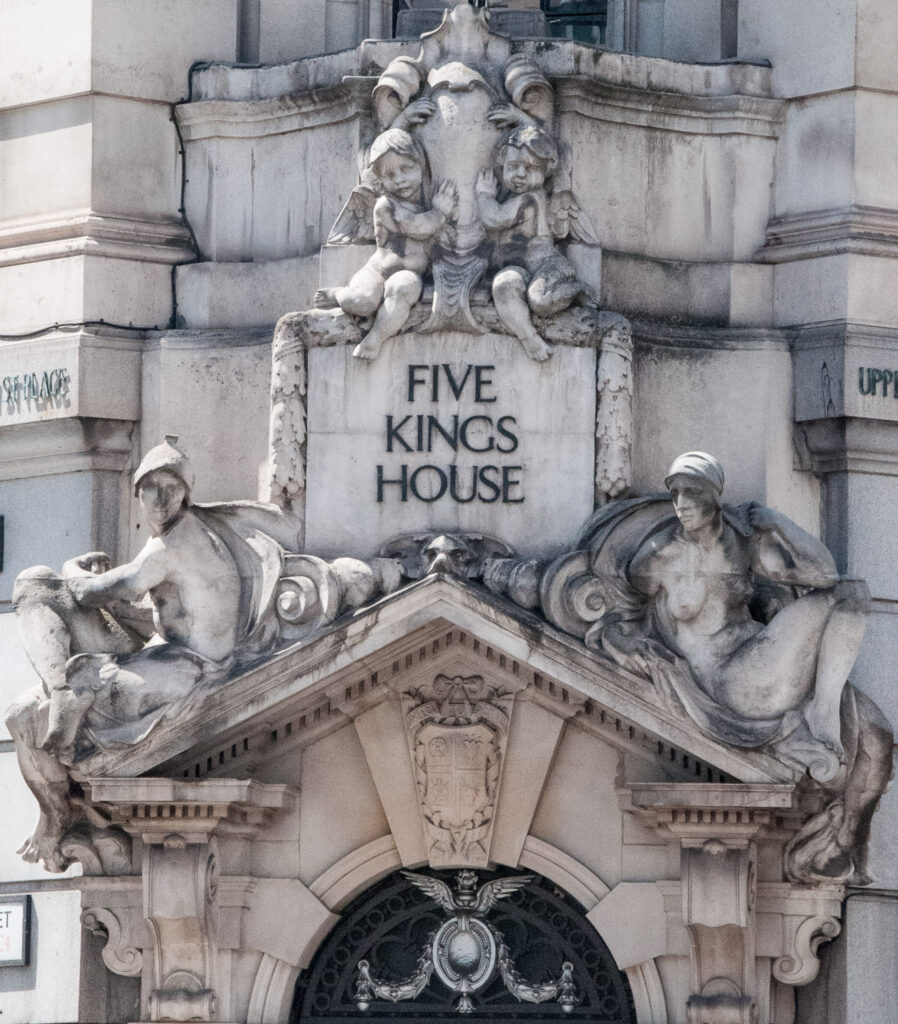I had a great stroke of luck last Friday when I wandered into St Dunstan’s and met by chance two of the lady administrators who kindly took the trouble to show me around. The church is on Fleet Street (EC4A 2HR).
In a niche in one of the side chapels is a marble bust of a youth with fine features, Edward James Auriol lying on a pillow, hand on heart, as if asleep …
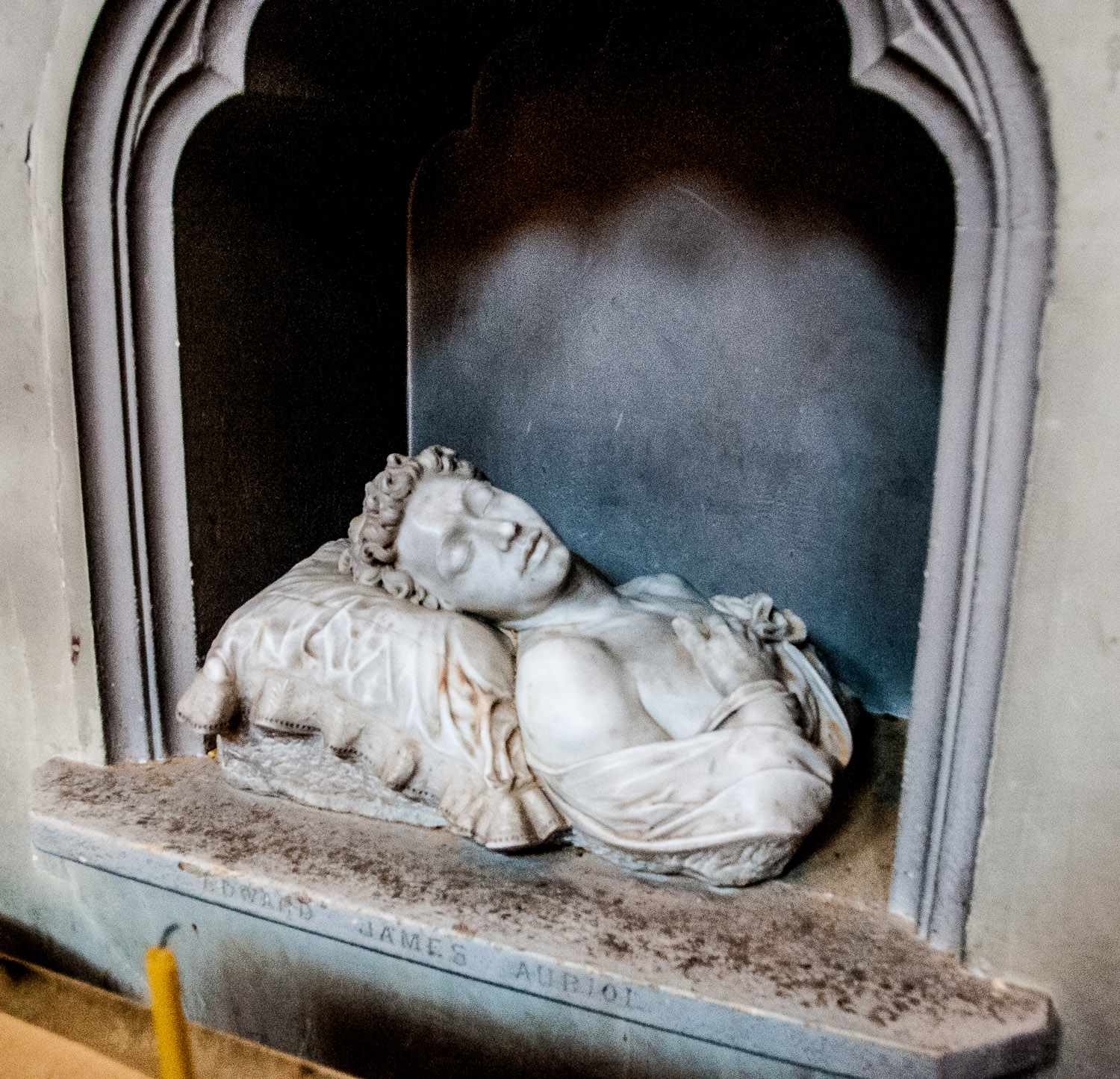
In fact, he died tragically at the age of 17 when he drowned in the Rhône river in Geneva one bright morning on 19th August 1847. A student at King’s College London, he was the ‘tenderly beloved and only child’ of the Rector of St Dunstan’s Edward Auriol and his wife Georgiana.
Nearby is this fascinating memorial to ‘ye fam’d swordsman’ Alexander Layton who died in 1679 and who rests ‘not far from this place’ …

Erected by a grateful scholar of Layton’s, ‘John Brewer of Grays Inn Road’, at the foot of the tablet are the following words suggesting Layton’s final opponent was death itself …
His thrusts like lightning flew, more skilful Death
Parried ’em all, and beat him out of breath.
There was nothing the ‘Master of Defence’ could do.
There’s a memorial bust to Cuthbert Fetherstone (1537-1615) …

He served as the Gentleman Usher to Queen Elizabeth I, and as such was her trusted friend. Cuthbert and his wife Katharine lived in London but the housing conditions in the city were poor and they eventually left their home in Chancery Lane. They purchased Hassingbrook Hall, an ancient manor near the banks of Hassinbrook at Stanford-le-Hope, twenty-five miles downstream from London. After Elizabeth’s death he became Usher and Crier to King James I.
Here he is, painted in oils around 1598 …
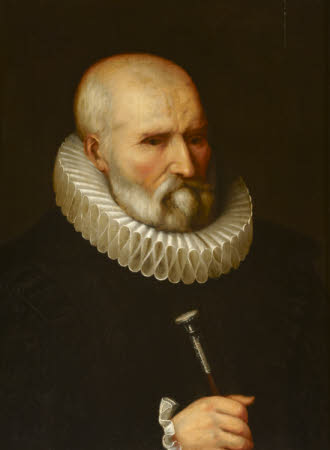
The earliest monuments in the church are these two brass kneeling figures …

The plaque reads as follows …
Here lyeth buryed the body of Henry Dacres, Cetezen and Marchant Taylor and Sumtyme Alderman of London, and Elizabeth his Wyffe, the whych Henry decessed the … day of … the yere of our Lord God – and the said Elizabeth decessed the xxii day of Apryll the yere of our Lord God MD and XXX.
Elizabeth died in 1530 and Henry nine years later. His will tells us that the brass was already made before he died and ‘made at myn owne costes to the honour of almighty god and the blessed sacrament’. He also left 20 shillings to be used for the annual purchase of coal for the benefit of poor parishoners.
I am sure there are very few dishonest solicitors nowadays, but there seems to have been a time when an honest one was rather unusual, and this virtue was so exceptional that his clients paid for a memorial plaque saying so. It reads ‘Hobson Judkin, late of Clifford’s Inn, THE HONEST SOLICITOR who departed this life June 30th 1812’.
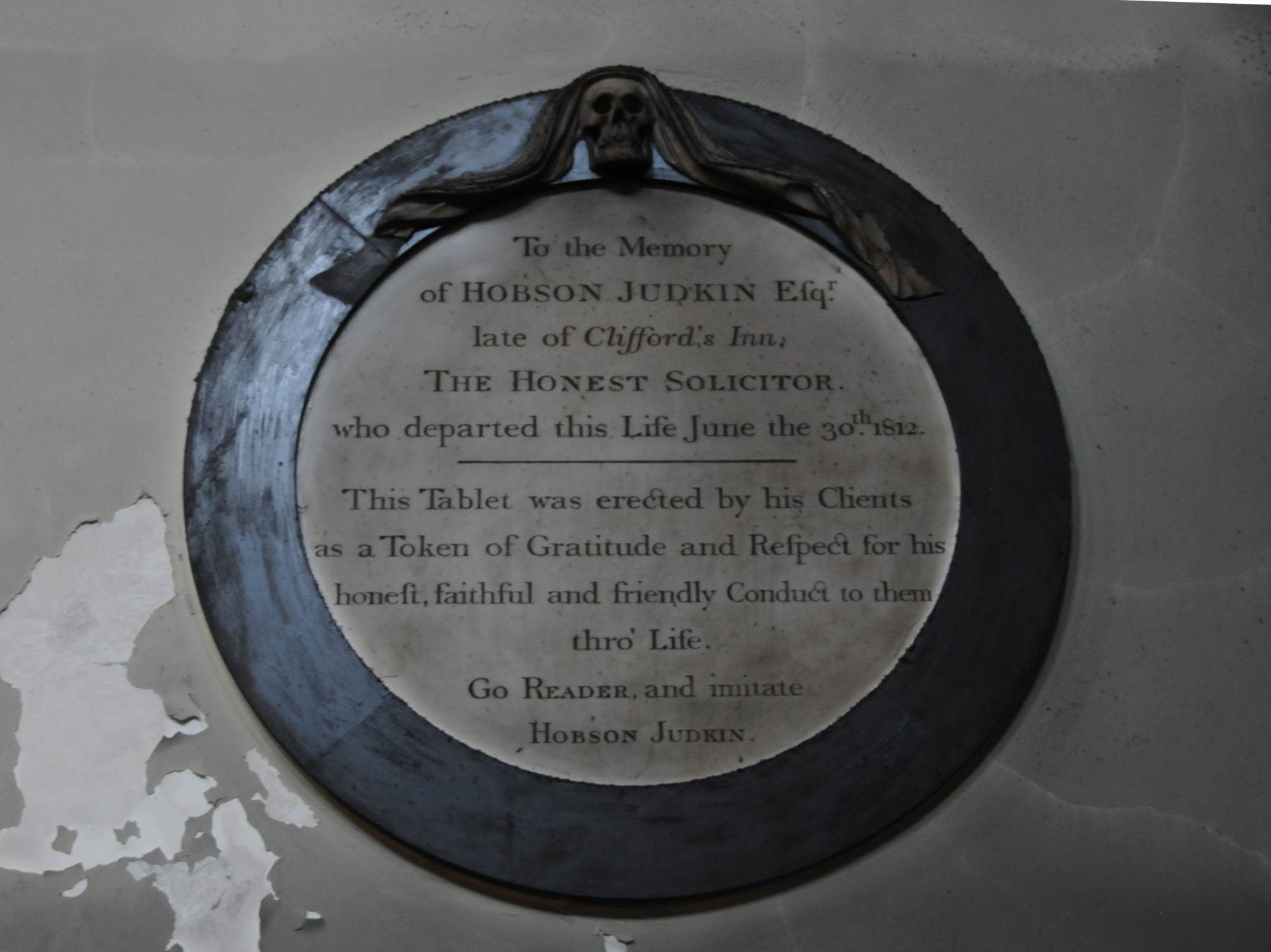
‘Go reader’ we are commanded ‘and imitate Hobson Judkin’.
The kneeling figure next to the war memorial is said to represent Sir Roger North (1577-1651) …

This plaque celebrates the virtues and generosity of James Chambers, a ‘Citizen and Goldsmith … Eminent Banker … A man courteous to his neighbours … a Loving Husband, a Tender Father and a Sincere Friend’ …

He was also incredibly generous, being …
Very benificent to his Relations to whom he parted with upwards of £20,000 in his lifetime.
That would be getting on for two million pounds in today’s money.
The front right-hand pew has a seat reserved for the Lord Mayor, dramatically marked by an iron sword rest, dating from 1745, and commemorating the English victory over the Jacobite Young Pretender, Bonnie Prince Charlie, at Culloden. My photograph doesn’t really do it justice …

Sword rests, or sword stands, were originally installed in City churches to hold the Lord Mayor’s sword of state when he visited different churches every Sunday, a practice which ceased in 1883.
Dedicated to a Saxon Archbishop of Canterbury and Benedictine monk, St Dunstan’s survived the Great Fire but was demolished and rebuilt between 1830 and 1833. The octagonal interior is wonderfully atmospheric …

I took a close look at the remarkable Christian Orthodox screen (or iconostasis) which came from Romania in 1966 …

The screen is over 100 years old and was originally created for the Monastery of Antim in Bucharest. I also spotted various individual icons …

These and the screen are clues to the fact that, although this is a Church of England church, it also hosts Romanian Orthodox Church services.
There is more to see in St Dunstan’s and I intend to return. If you are interested in churches, this is definitely one to visit. It has just reopened for private prayer and you can find opening times on the website.
Remember you can follow me on Instagram :

